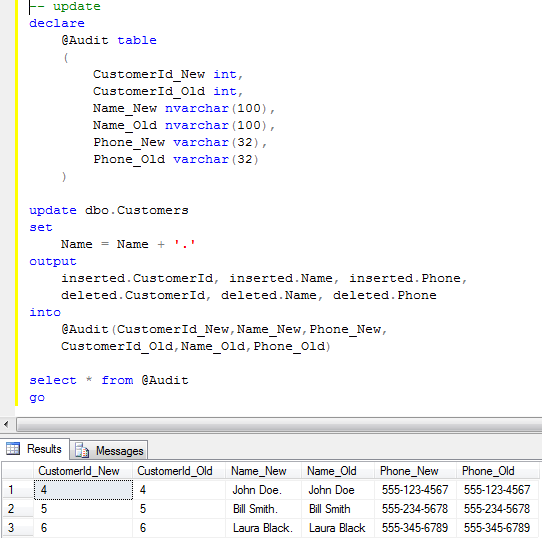During the next a few Sundays I’m planning to talk about one of the under-appreciated constructs in T-SQL – OUTPUT clause. This clause can help you a lot when you need to develop set-based code or convert old cursor-based code into the set operations.
Output clause works together with inserted and deleted system tables. Every developer who wrote at least one DML Trigger familiar with those tables. Those are 2 tables that SQL Server populates and manages automatically. Inserted table contains the new version of the row values. Deleted tables contains the old version of the row values. As you understand inserted table has the data during insert and update operations. Deleted table has the data during update and delete operations.
Let’s see that in the action. First let’s create a table:

Now let’s assume we want to implement the audit trigger. Below is very simple and straightforward approach how we can do that:

Now let’s test the solution.

Below is the XMLs

Anyway, the good and very useful thing that inserted and deleted tables are available not only with the triggers but with insert/update/delete statements. Let’s take a look. First – insert:

As you can see – you have access to generated identity values. You can see that it works the same way with updates and deletes.


One particularly interesting thing is what happen if statement is rolled back. Let’s populate data to the table again and create the trigger which rollbacks the transaction

Now let’s run the update statement:

As you can see – statement is rolled back – the data has not been changed in the original table but deleted/inserted table were created and populated. Output clause also worked. Such behavior opens the door to the interesting possibilities, for example audit on rollback.
You can download the script from here. Next Sunday we will talk about OUTPUT clause with MERGE statement. This combination is much more powerful than OUTPUT with insert/update/delete.